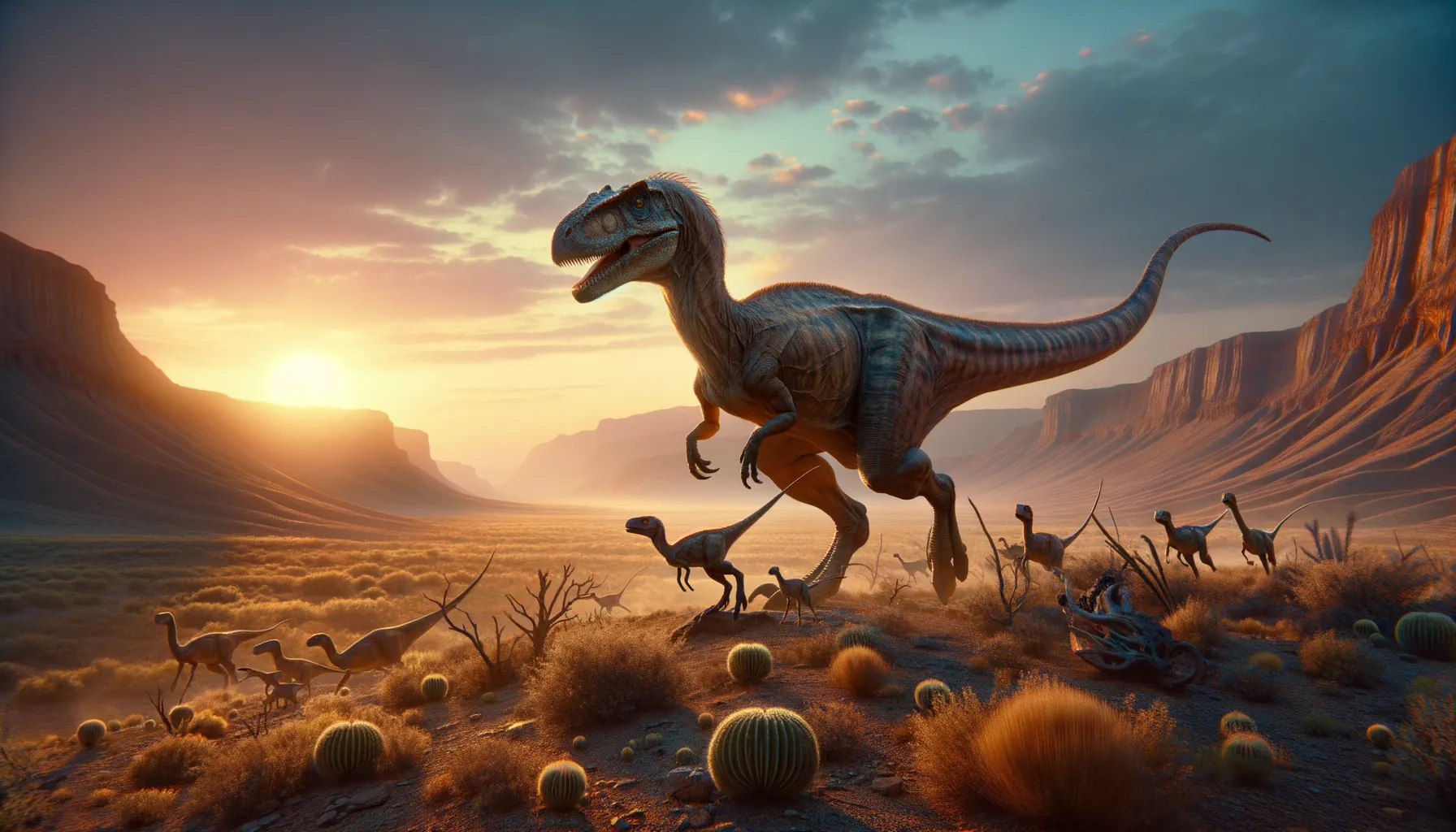
Maleevus
A small predator with a big role.
Period
Cretaceous
Length
Around 3 meters long.
Height
Approximately 0.9 meters tall.
Weight
Roughly 25 to 40 kg.
Maleevus was a small theropod dinosaur that lived during the Late Cretaceous period. Known for its bipedal stance, it roamed the semi-arid landscapes of what is today known as Mongolia. Its limited size suggests it was not the top predator in its ecosystem, likely feeding on smaller animals and possibly scavenging. The discovery of its fossils has provided valuable insights into the diversity of theropod dinosaurs in Asia.
Diet
Maleevus is believed to have had a carnivorous diet, feeding primarily on small animals. Given its size, it likely preyed upon insects, smaller reptiles, and possibly scavenged carcasses.
Hunting
Its hunting behavior would have involved quick, agile movements to capture prey. The use of its sharp teeth and claws would have been critical in securing food, allowing it to feed effectively in a competitive environment.
Environmental challenges
Living in a semi-arid environment, Maleevus would have faced challenges such as limited water sources and prey scarcity. Seasonal changes would influence food availability, requiring adaptability. Its survival depended on its ability to exploit various food resources and possibly scavenge when necessary.
Speed
Likely slow-moving due to its small size.
Lifespan
Estimated to live around 20 to 30 years.
First discovery
First discovered by Evgeny Maleev in Mongolia, 1954.
Fun Facts
- Maleevus is named after Evgeny Maleev, a prominent Soviet paleontologist.
- It lived during the Late Cretaceous period, which was about 70 million years ago.
- Maleevus is known from fossils discovered in Mongolia in the Gobi Desert.
- The exact diet of Maleevus is still a mystery, but it might have been carnivorous.
- Its fossils are limited, so scientists are still piecing together what this dinosaur looked like.
- Maleevus might have had a small body size compared to other theropods of its time.
- Despite its mysterious nature, Maleevus contributes valuable information about dinosaur diversity in Asia.
Growth and Development
Maleevus likely experienced steady growth, with juveniles possibly having a higher growth rate. The growth stage might have involved learning necessary hunting skills and gaining independence gradually. Fossil evidence suggests a varied diet could support its development, contributing to a flexible growth strategy.
Habitat
Maleevus inhabited the deserts of ancient Mongolia, characterized by sparse vegetation. These arid conditions offered limited cover, influencing its behavior and interactions. The region's climate was likely variable, with Maleevus adapting to temperature extremes and harsh conditions.
Interaction with other species
Maleevus might have encountered various competitors and predators, requiring strategic interactions to survive. Coexistence with larger theropods could have influenced its feeding habits, leading to opportunistic scavenging. Social behavior might have included forming small groups, enhancing survival in a harsh environment.
Natural lifespan
Its natural lifespan was likely around two to three decades.
Reproduction
Reproduction likely involved laying eggs, with nesting in safe, concealed areas. Parental investment might have varied, ensuring offspring survival in challenging environments. Fossil evidence does not provide clear details on social structures related to reproduction.
Social behaviour
Maleevus might have exhibited solitary behavior, occasionally forming small groups. Social interactions could have revolved around hunting or nesting sites. Opportunistic feeding might lead to temporary aggregations around food sources.
Fossil locations
Fossils of Maleevus have been discovered in Mongolia, providing valuable data on Asian theropods. These findings help paleontologists understand the diversity and distribution of dinosaurs in Cretaceous Asia. Ongoing research continues to uncover more about its ecology and behavior.
